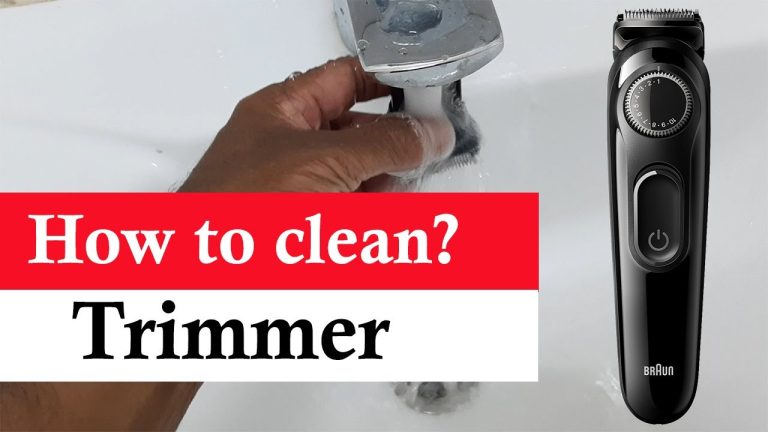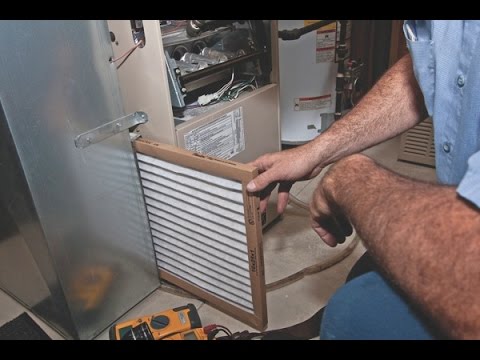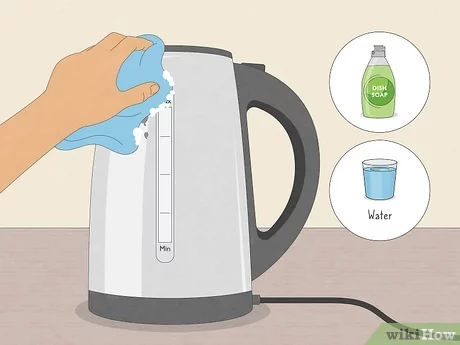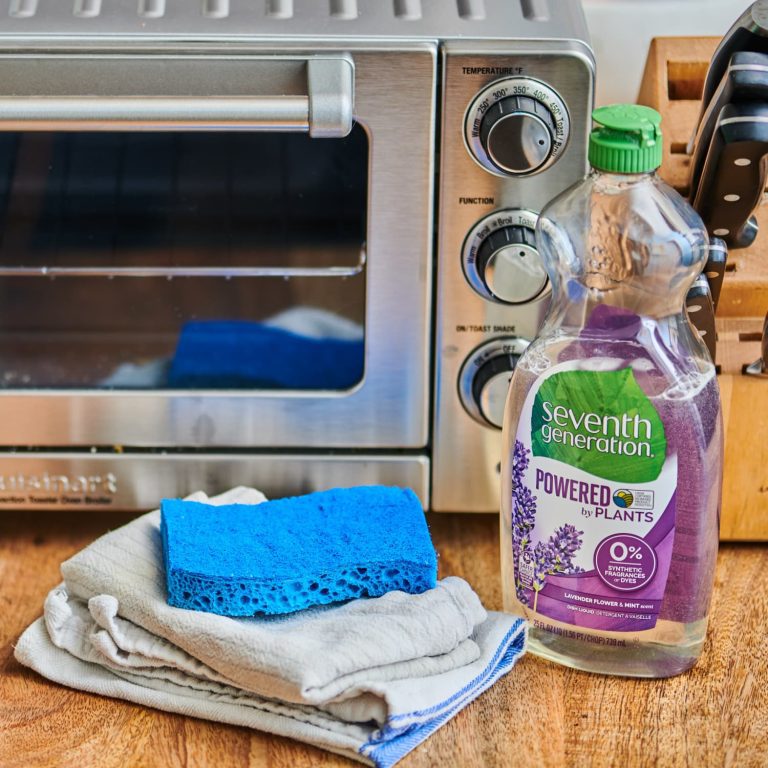How to Trim Beard With Electric Trimmer?
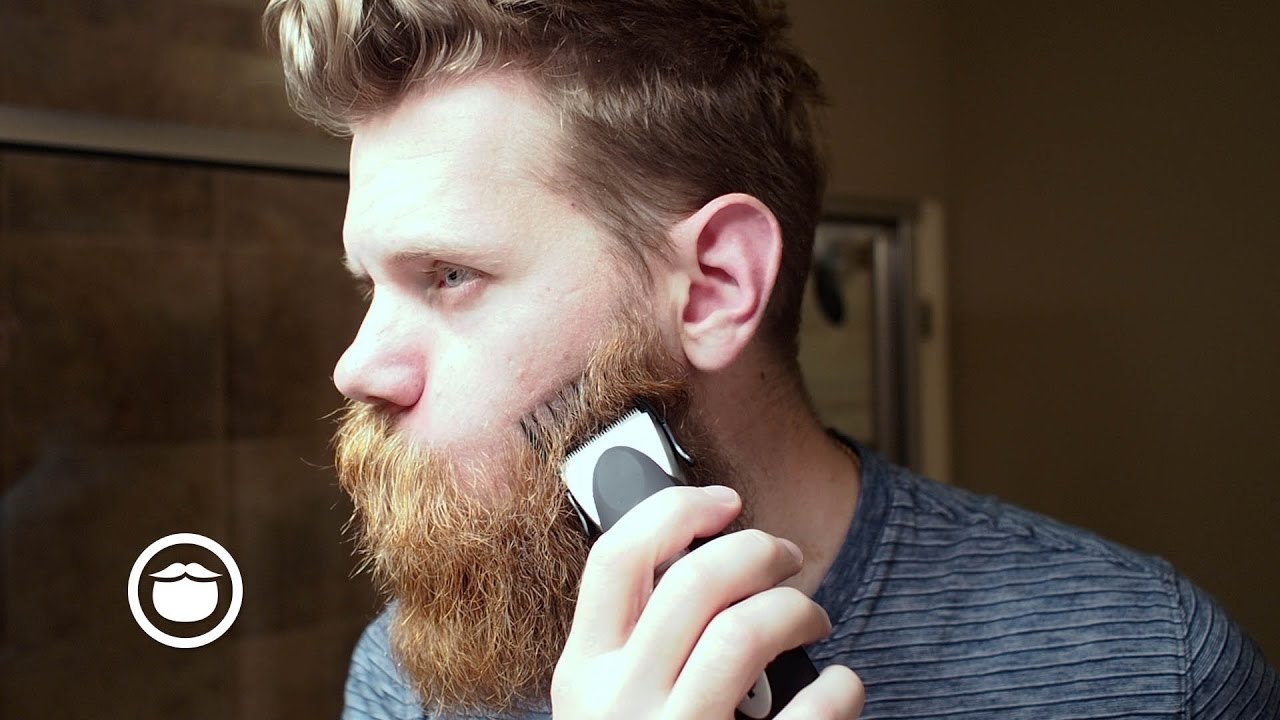
To trim your beard with an electric trimmer, first, comb your beard and set the trimmer to your desired length. Then, starting at the neckline, move the trimmer upwards in slow, even strokes, following the contour of your jawline.
Trim the sides of your beard towards your chin, and use the trimmer’s precision blade to sharpen edges and create clean lines. Remember to regularly clean and oil your trimmer for optimal performance. A well-groomed beard enhances your appearance and boosts your confidence, so give your beard the attention it deserves.
Preparing Your Beard For Trimming
Before you start trimming your beard with an electric trimmer, it is essential to properly prepare your beard. This involves a few simple steps that will ensure a smoother and more accurate trimming experience. By following these steps, you can achieve a well-groomed and neatly trimmed beard that enhances your facial features.
Washing and drying your beard
One of the first steps in preparing your beard for trimming is washing and drying it. This helps to remove any dirt, oils, or product buildup that may be present in your beard. Start by wetting your beard with warm water, then apply a mild beard shampoo or cleanser. Gently massage the product into your beard, making sure to work it through the entire length. Rinse thoroughly to ensure all the shampoo is removed.
After washing your beard, it is important to dry it completely before trimming. Excess moisture can make it difficult for the electric trimmer to glide smoothly through your beard. Pat your beard dry with a clean towel or use a blow dryer on a low setting to speed up the drying process. Make sure your beard is completely dry by running your fingers through it.
Combing and detangling your beard
Before trimming your beard, combing and detangling it is crucial to ensure an even and uniform trim. Use a wide-toothed beard comb or brush to gently work through any knots or tangles. This will help to eliminate any snags or uneven sections that can affect the trimming process.
Start combing your beard from the roots to the tips, using downward strokes to ensure the hair is properly aligned. This will also help to eliminate any excess air that can make your beard appear thicker than it actually is. Take your time and comb through your entire beard, making sure all the hairs are lying flat and in the desired direction.
Applying beard oil or conditioner for softening
Applying beard oil or conditioner is an important step in preparing your beard for trimming. This helps to soften the beard hair, making it easier to trim and reducing the risk of pulling or snagging. Beard oil also provides moisture to the skin underneath, preventing dryness and itching.
To apply beard oil or conditioner, start by dispensing a few drops onto your palms. Rub your hands together to distribute the product evenly and then massage it into your beard, starting from the roots and working towards the tips. Make sure to cover the entire beard, focusing on the areas that will be trimmed. Use a comb or brush to help spread the product evenly, ensuring every hair is coated.
By following these steps to prepare your beard for trimming, you can ensure a smoother, more precise trimming experience with an electric trimmer. Washing and drying your beard, combing and detangling it, and applying beard oil or conditioner will create the ideal foundation for achieving a well-groomed and stylish beard.
Selecting The Right Trimming Length
When it comes to trimming your beard with an electric trimmer, selecting the right trimming length is crucial to achieving the desired look. The length of your beard can greatly affect your overall appearance, so it’s important to understand how to choose the perfect length for your style. In this section, we will explore the different aspects of selecting the right trimming length to help you achieve the best results.
Understanding Trimmer Guard Sizes
One of the key factors in selecting the right trimming length is understanding the trimmer guard sizes. Trimmer guards come in various lengths, typically ranging from 1/16 of an inch to an inch or more. These guards are designed to control how much hair is cut, allowing you to trim your beard to a specific length consistently. It’s important to note that different trimmer brands may have slightly different guard sizes, so always refer to the manufacturer’s guide to ensure accuracy.
To determine the desired length of your beard, evaluate your personal style and preferences. If you prefer a shorter, neater look, you may opt for a shorter guard size. On the other hand, if you desire a longer, more rugged appearance, a larger guard size will be more suitable. It’s all about finding the length that suits you best and enhances your facial features.
Deciding on the Desired Beard Length
Deciding on the desired beard length is a personal choice and depends on various factors such as face shape, hair density, and lifestyle. Before starting your trimming journey, take a moment to analyze your facial structure and envision what beard length would complement it. Are you aiming for a full beard? A well-groomed stubble? Or maybe even a perfectly sculpted goatee? Understanding your desired beard length will make the trimming process much easier.
Adjusting the Trimmer Settings Accordingly
Once you have decided on the desired beard length, it’s time to adjust the trimmer settings accordingly. Most electric trimmers have adjustable settings that allow you to choose your desired length easily. Whether it’s a dial that adjusts the guard length or a switch that changes the trimming speed, make sure to set the trimmer to the correct setting before you start trimming.
It’s important to remember that when adjusting the trimmer settings, it’s better to start with a longer length and gradually trim the beard shorter if needed. This way, you can avoid accidentally cutting off more hair than intended. Additionally, don’t forget to regularly clean and oil your trimmer to ensure optimal performance and longevity.
To summarize, selecting the right trimming length is essential for achieving your desired beard style. By understanding trimmer guard sizes, deciding on the desired beard length, and adjusting the trimmer settings accordingly, you can easily achieve a well-maintained and stylish beard with an electric trimmer.
Trimming The Beard
Starting from the neckline and working upwards
When it comes to trimming your beard with an electric trimmer, it’s important to start from the neckline and work upwards. This allows you to create a clean and even look, removing any hair that may be growing below the natural neckline.
To begin, make sure your beard is dry and clean. Use a comb to brush the hair in the direction of hair growth, so that it is easier to trim. Starting from the center of your neckline, guide the trimmer upwards, following the natural curve of your jawline.
Continue moving the trimmer along the neckline, using light and gentle strokes. Pay close attention to any stray hairs or longer strands that may need to be trimmed. Remember, it’s better to take off less hair at first and then go back for more if needed, rather than trimming too much in one go.
Trimming in the direction of hair growth
When trimming your beard with an electric trimmer, it’s important to always go in the direction of hair growth. This helps to maintain the natural shape and texture of your beard, resulting in a more polished and professional look.
To trim in the direction of hair growth, start at one side of your beard and work your way towards the other side. Use the trimmer’s adjustable guard or comb attachment to determine the desired length. Make sure to move the trimmer slowly and steadily, allowing the blades to cut through the hair with ease.
If you notice any areas where the hair is growing in a different direction, adjust your technique accordingly. For example, if you have a swirl or a patch of hair that grows in a different direction, you may need to go against the grain to achieve a more even trim.
Using light and gentle strokes
Using light and gentle strokes is key when trimming your beard with an electric trimmer. This helps to prevent any accidental nicks or cuts, while also ensuring a more precise and controlled trim.
Hold the trimmer with a relaxed grip, allowing it to glide smoothly over the surface of your beard. Start with shorter strokes, gradually increasing the length as you become more comfortable with the trimmer. Remember, it’s better to take your time and go over the same area multiple times, rather than rush and risk making a mistake.
After each stroke, take a moment to assess the length and shape of your beard. If necessary, make any adjustments or touch-ups before moving on to the next section. This will help you achieve a well-groomed and symmetrical beard.
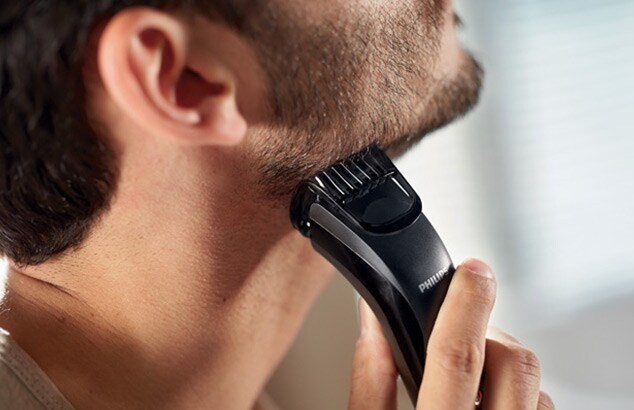
Credit: www.usa.philips.com
Shaping The Beard
Creating the perfect shape for your beard is an essential step in achieving a well-groomed and polished look. Shaping your beard not only adds structure and definition but also enhances your facial features. In this section, we will explore three key areas of beard shaping: creating a defined neckline, trimming and shaping the cheek line, and creating symmetry on both sides.
Creating a defined neckline
A defined neckline is the foundation of a well-shaped beard. It helps create a clean and neat appearance, giving your beard a sharp and tidy look. To create a defined neckline, follow these simple steps:
- Start by identifying the natural line where your neck meets your jawline. This will be the bottom boundary of your neckline.
- Use an electric trimmer with a guard attachment or an adjustable guard setting to trim the hair below this line. Start with a longer guard setting and gradually decrease it for a more tapered look.
- Tip: Using a transparent shaving gel or cream can help you see the hairline clearly and achieve a more precise trim.
By creating a defined neckline, you’ll give your beard a clean and well-groomed appearance that accentuates your jawline.
Trimming and shaping the cheek line
The cheek line plays a significant role in framing your face and achieving a well-proportioned beard. Trimming and shaping the cheek line can create a more polished and symmetrical look. Here’s how:
- Locate the natural cheek line by identifying the highest point where your beard should end on your cheeks.
- Use a vertical motion with your electric trimmer to trim any stray or overgrown hair above this line.
- Tip: For a precise and symmetrical cheek line, use the opposite side of your face as a reference point.
Trimming and shaping the cheek line not only adds structure to your beard but also enhances your facial features, giving you a more defined and sophisticated appearance.
Creating symmetry on both sides
Creating symmetry on both sides of your beard is essential for a balanced and harmonious look. Consistency in shape and length is key to achieving this. Follow these steps to ensure a symmetrical beard:
- Regularly compare both sides of your beard in a mirror to identify any discrepancies.
- Make precise adjustments using your electric trimmer to match the shape, length, and density of the beard on both sides.
- Tip: Take your time and make small, gradual trims to avoid any drastic changes that might compromise the overall symmetry.
A symmetrical beard not only enhances your facial features but also portrays a sense of attention to detail and grooming.
In summary, shaping your beard is an essential step in achieving a well-groomed and polished look. By creating a defined neckline, trimming and shaping the cheek line, and creating symmetry on both sides, you’ll be able to shape your beard to perfection. Now that you have mastered the art of shaping, it’s time to step out with confidence, knowing that your well-groomed beard is turning heads wherever you go.
Detailing And Finishing Touches
When it comes to achieving the perfect beard style, the detailing and finishing touches can make all the difference. This is where the precision and finesse of using an electric trimmer really come into play. In this section, we will explore some key techniques to master the art of detailing and adding those final touches that will take your beard game to the next level.
Using a Precision Trimmer for Shaping the Mustache
Trimming your mustache is an essential step in beard grooming, as it helps define your facial features and keeps your mustache looking neat and tidy. To shape your mustache, use a precision trimmer with a small blade or an attachment specifically designed for this purpose. Start by combing your mustache downwards and carefully trim any overgrown hairs that extend beyond your upper lip. Be sure to follow the natural contours of your upper lip to create a clean and symmetrical shape. Remember, less is more – start with small adjustments and gradually work towards your desired look. Once you’re happy with the length, use a pair of grooming scissors to fine-tune any stray hairs that the trimmer might have missed.
Trimming Stray Hairs and Flyaways
Even with the most meticulous trimming, there may still be stray hairs or flyaways that need some attention. To tackle these, use a precision trimmer on a low setting. Gently run the trimmer over the areas where you spot stray hairs, such as the cheeks, neckline, and under the jawline. Move the trimmer in short, controlled strokes to ensure you remove only the stray hairs without disrupting the overall shape of your beard. Don’t forget to regularly clean the trimmer’s blades to maintain optimal performance and prevent snagging or pulling.
Checking for Any Uneven Spots
Now that you’ve shaped your mustache and trimmed the stray hairs, it’s time to give your beard a final once-over to ensure it’s even and well-groomed. Stand in front of a well-lit mirror and check for any uneven spots. If you spot any areas that seem longer or shorter than the rest of your beard, carefully trim them using a precision trimmer. Take your time and make small adjustments until your beard looks balanced and symmetrical.
In addition to using a precision trimmer, don’t forget to take care of your beard by washing it regularly, moisturizing the skin underneath, and using a beard oil or balm to keep the hair soft and manageable. With these detailing and finishing touches, you’ll be well on your way to rocking a perfectly trimmed beard that turns heads wherever you go.
Maintaining And Cleaning Your Electric Trimmer
Maintaining and Cleaning Your Electric Trimmer
Proper maintenance and regular cleaning are essential for ensuring the longevity and optimal performance of your electric trimmer. By following a few simple steps, you can keep your trimmer in top shape and achieve a precise and clean beard trimming experience. In this section, we will discuss the three key aspects of maintaining and cleaning your electric trimmer: removing hair and debris regularly, lubricating the blades for smooth operation, and storing the trimmer in a safe and dry place.
Removing Hair and Debris Regularly
To keep your electric trimmer functioning at its best, it is important to remove any accumulated hair and debris after each use. Neglecting this step can result in clogged blades and reduced trimming performance. Here’s how you can effectively remove hair and debris from your trimmer:
- Gently tap the trimmer against a hard surface to dislodge any loose hair or debris.
- Use a small cleaning brush to sweep away any remaining hair and debris from the blades and other areas of the trimmer.
- Inspect the trimmer head and blades for any stubborn hair or buildup. If necessary, use a small toothbrush or an old toothbrush to carefully remove it.
- Using a soft cloth or tissue, wipe down the entire trimmer to remove any remaining dirt or residue.
By incorporating these simple steps into your post-trimming routine, you can ensure that your electric trimmer remains clean and free from any obstruction, allowing for a more effective and precise trimming experience.
Lubricating the Blades for Smooth Operation
Properly lubricating the blades of your electric trimmer is crucial for maintaining its cutting efficiency and prolonging its lifespan. Regular lubrication helps reduce friction between the blades, prevents them from overheating, and ensures a smooth trimming experience. Here’s how you can lubricate the blades of your electric trimmer:
- Before applying any lubricant, make sure your trimmer is clean and free from any hair or debris.
- Apply a small amount of trimmer oil or lubricant to the blades. Be careful not to overdo it, as excessive oil can attract more dirt and cause clogging.
- Turn on the trimmer for a few seconds to distribute the lubricant evenly across the blades.
- Wipe off any excess oil with a clean cloth or tissue.
Regular lubrication, typically once every few weeks or as recommended by the manufacturer, will help keep your blades sharp, prevent rusting, and maintain optimal performance of your electric trimmer.
Storing the Trimmer in a Safe and Dry Place
Proper storage is crucial for protecting your electric trimmer from damage and maintaining its overall quality. After each use, make sure to store your trimmer in a safe and dry place. Here are a few tips to ensure the proper storage of your electric trimmer:
- Clean the trimmer thoroughly, following the steps mentioned earlier in this section.
- Remove the battery or unplug the trimmer, depending on the type of trimmer you have.
- Store the trimmer in a protective case or pouch to protect it from dust, moisture, and accidental damage.
- Avoid storing the trimmer in a humid environment, as moisture can cause damage to the internal components.
- Keep the trimmer away from children and pets.
By following these storage guidelines, you can ensure that your electric trimmer remains in excellent condition, ready for your next grooming session.
Tips And Tricks For A Great Beard Trim
Getting a perfect beard trim can greatly enhance your appearance and make you feel confident. However, achieving that flawless trim requires a combination of technique and patience. By following these helpful tips and tricks, you can ensure that your next beard trim is a success.
Taking your time and being patient
Taking your time and being patient is crucial when trimming your beard with an electric trimmer. Rushing through the process can result in uneven cuts and an overall messy look. Instead, set aside some dedicated time for your trim, free from distractions, and focus on achieving the best results.
Starting with a longer guard size and gradually going shorter
When beginning your beard trim, it is advisable to start with a longer guard size on your electric trimmer. This will allow you to remove bulk and maintain a good length without going too short too quickly. Once you have achieved the desired length, gradually reduce the guard size, making small adjustments as you go. This gradual approach will ensure that you have more control over the length and avoid any drastic mistakes.
Using a mirror for better visibility
Using a mirror during your beard trim is essential for better visibility and precision. Position the mirror in a well-lit area, ensuring that you can see your entire face clearly. This will enable you to spot any uneven areas and make necessary corrections. Additionally, having a mirror allows you to check your progress from different angles, ensuring a well-balanced and symmetrical trim.
- Take your time and be patient: Rushing through your beard trim can lead to uneven cuts and a messy appearance. Dedicate ample time to your trim, free from distractions, to achieve the best results.
- Start with a longer guard size and gradually go shorter: Begin your trim with a longer guard size to remove bulk and maintain a good length. Gradually reduce the guard size as desired, ensuring more control and avoiding drastic mistakes.
- Use a mirror for better visibility: Position a well-lit mirror to see your entire face clearly during the trim. This aids in spotting and correcting uneven areas, as well as ensuring a balanced and symmetrical trim.
Avoiding Common Beard Trimming Mistakes
Trimming your beard with an electric trimmer is a convenient and efficient way to maintain your facial hair. However, it’s important to be mindful of some common mistakes that many men make when using these tools. By avoiding these pitfalls, you can achieve a well-groomed and polished beard that enhances your overall appearance.
Trimming too much off at once
One of the most common mistakes men make when using an electric trimmer is trimming too much off their beard in a single session. While it may be tempting to go for a drastic change, it’s crucial to take a gradual approach to avoid any regrets. Trimming too much off at once can result in an uneven or patchy beard, and regrowing it to the desired length can take time. To prevent this, start by trimming a small amount and then assess the results. You can always trim more later but be cautious not to overdo it.
Neglecting to regularly maintain the trimmer
Regular maintenance of your electric trimmer is essential to ensure optimal performance and longevity. Many men overlook this aspect, leading to problems such as clogged blades or dull cutting edges. To avoid these issues, make it a habit to clean the trimmer after each use. Remove any loose hairs and debris that may have accumulated around the blades, and oil them according to the manufacturer’s instructions. Additionally, replacing the blades or combs when necessary will help maintain the trimmer’s effectiveness and ensure a precise and clean trim.
Rushing through the trimming process
When it comes to beard trimming, patience is key. Rushing through the process can lead to uneven results and unsatisfactory outcomes. Take your time and carefully work your way through your beard, paying attention to detail. Start with longer guard settings and gradually decrease the length until you achieve your desired style. Remember to move the trimmer against the direction of hair growth for a more even trim. By taking your time and being meticulous, you can achieve a well-trimmed and neat beard that enhances your facial features.
Troubleshooting Common Beard Trimming Issues
Dealing with Ingrown Hairs
Ingrown hairs can be a frustrating issue that many men face when trimming their beards. These hairs can become trapped beneath the surface of the skin, causing redness, irritation, and even infection if not properly dealt with. To prevent and treat ingrown hairs, follow these steps:
- Before trimming your beard, make sure your skin is clean and exfoliated. This will help to remove any dead skin cells and unclog pores, reducing the chances of hairs becoming trapped.
- Trim your beard in the direction of hair growth to minimize the chances of hairs being cut too short and becoming ingrown. Going against the grain can increase the risk of ingrown hairs.
- If you notice any ingrown hairs, avoid picking or scratching at them, as this can lead to further irritation or infection. Instead, use a clean pair of tweezers to gently lift the hair out from beneath the skin. Disinfect the area afterward to minimize the risk of infection.
- To prevent future ingrown hairs, moisturize your beard regularly to keep the skin and hair soft. This will help the hairs to grow out straight and reduce the chances of them curling back into the skin.
Fixing Uneven Beard Length
Having an uneven beard can be a common issue when using an electric trimmer. However, there are steps you can take to achieve a more uniform length:
- Start by investing in a quality electric trimmer with adjustable length settings. This will allow you to trim your beard to a consistent length.
- Use a comb to lift the beard hairs before trimming. This will help to ensure that all hairs are standing upright and can be trimmed evenly.
- Start by trimming your beard to a longer length and gradually work your way down until you achieve the desired length. This will help to prevent accidentally trimming too much off in one go.
- If you still notice uneven areas, use small scissors to carefully trim these areas to match the rest of your beard. Take your time and trim small amounts at a time to avoid any mishaps.
Addressing Patchy or Thin Areas
If you have patchy or thin areas in your beard, there are a few techniques you can try to create a fuller and more balanced look:
- Consider growing your beard slightly longer in these patchy areas to help fill them out. Longer hairs can provide additional coverage and give the illusion of a fuller beard.
- Experiment with different trimmer attachments or guards to achieve a more even appearance. Opt for a longer setting in patchy areas and a shorter setting in thicker areas to create a more consistent look.
- Use beard products, such as beard oils or balms, to nourish and condition the hair. These products can help to promote healthier and thicker hair growth over time.
- If all else fails, embrace your unique beard and work with what you have. Sometimes a well-groomed shorter beard can look just as stylish as a full one.
By following these troubleshooting tips, you can overcome common beard trimming issues and achieve a well-groomed and neatly trimmed beard that suits your style. Remember to always take your time and be patient when trimming your beard, as rushing can often lead to mistakes. Experiment with different techniques and products to find what works best for you and your beard.
Frequently Asked Questions On How To Trim Beard With Electric Trimmer
How Do You Shave Your Beard With An Electric Trimmer?
To shave your beard with an electric trimmer, start by washing and drying your beard. Next, set the trimmer to your desired length and gently run it against the hair growth. Make sure to go over all areas of your beard, including the neck and jawline.
How Do You Trim A Beard With A Trimmer For Beginners?
To trim your beard with a trimmer for beginners, follow these steps:
1. Start by combing your beard to remove any knots or tangles.
2. Choose the desired length setting on your trimmer and begin trimming in the direction of hair growth.
3. Trim small sections at a time, using a steady and gentle hand.
4. Pay attention to shaping the beard, especially around the neckline and cheek lines.
5. Regularly clean and maintain your trimmer for optimal performance.
Should You Trim Beard With Or Against The Grain?
Trim your beard with the grain to prevent irritation and ingrown hairs. This is the direction in which your hair naturally grows.
What Are The Different Beard Trimmer Attachments For?
Beard trimmer attachments are used for different purposes. They help shape and style your beard, trim hair to different lengths, and groom hard-to-reach areas. These attachments enable you to achieve various beard styles, such as stubble, short or long beards.
Conclusion
Achieving a well-groomed and stylish beard is made easy with the use of an electric trimmer. By following the step-by-step guide provided in this blog post, you can confidently trim your beard like a professional. Remember to start with a clean and dry beard, choose the right attachment, and trim in the direction of your hair growth.
